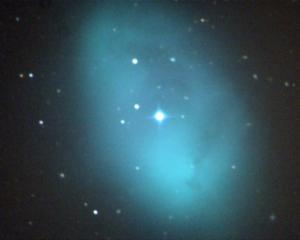At 7.50pm on Monday the centre of the sun crosses the celestial equator heading south. This is the exact moment of the southern hemisphere spring equinox, which means that all over the world the length of day and night are approximately equal.
For this week's Skywatch, I would like to invite you to get up early on Friday and join me for a pre-dawn jaunt around some celestial beauty spots in the northern sky.
The moon, which will be just under three-quarters illuminated, provides an excellent starting point. As this week's chart shows, our closest celestial neighbour will be high above the northern horizon an hour before sunrise.
It is always worth spending time exploring the moon. If you do have some binoculars or a telescope handy, you will be able to see the terminator (the line between night and day on the moon) bisecting the Sea of Serenity in the moon's northern hemisphere.
The moon is in the constellation Taurus, the Bull. Once you have had a good look around the moon, cast your eyes to the left. Even in bright moonlight, you should be able to pick out the bright orange-red star Aldebaran, which is some 12deg away. That distance is roughly the same as the angle subtended by the tip-to-tip span between your index finger and your little finger when held at arm's length.
Another object worth trying to spot is the beautiful star cluster called Matariki by Maori stargazers. Known as the Pleiades to Western astronomers, the star group, which is over 440 light years away, should be visible 7deg below the moon.
There is very often debate about how many stars in this cluster can be seen with the unaided eye. On dark, moonless nights, some keen-eyed astronomers claim to have seen as many as a dozen. Astronomers have used powerful telescopes to observe more than a thousand individual stars in Matariki. Because of the close proximity of the moon, I would be astonished if you can see many more than five or six members on Friday though.
-By Ian Griffin











